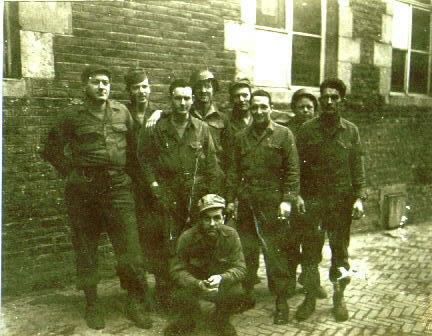Clayton Floyd Patisaul Another Soldier Moves On
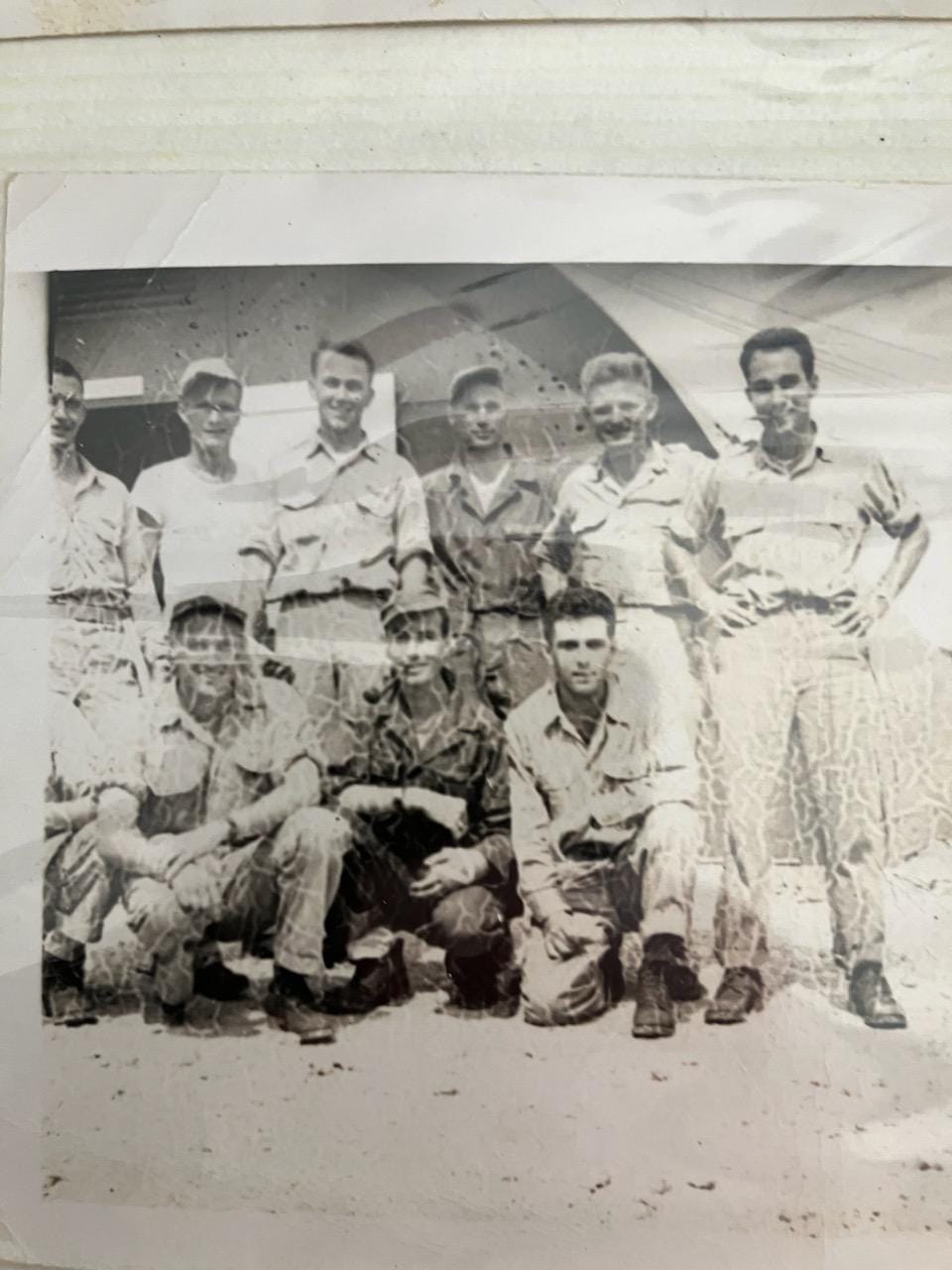
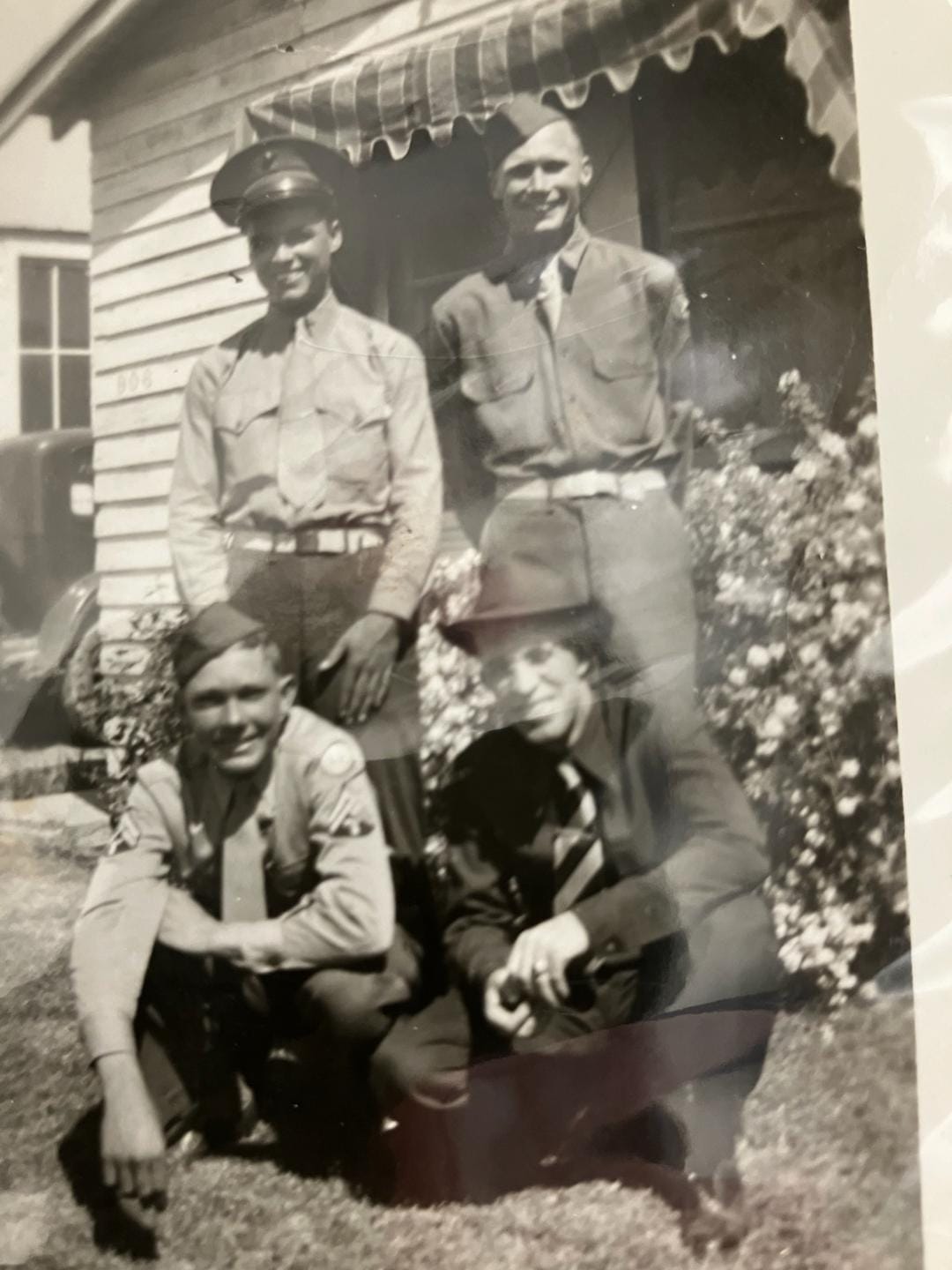
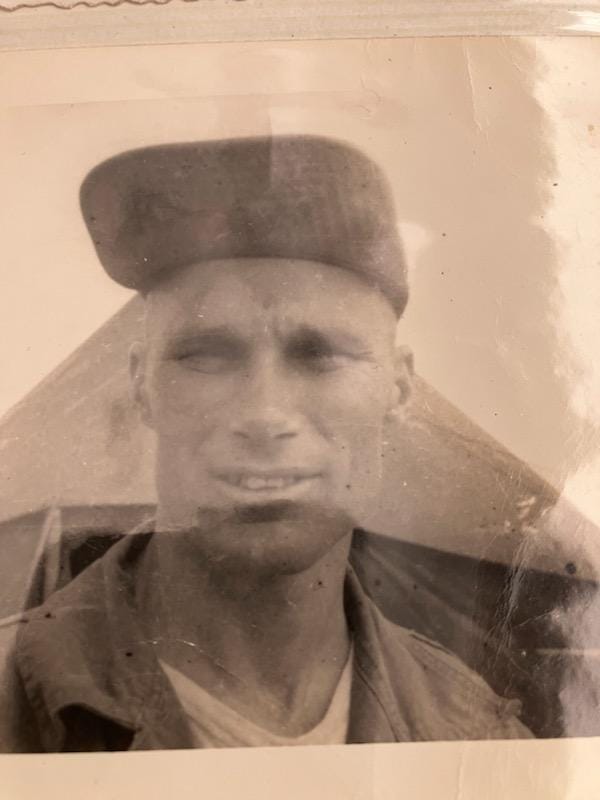
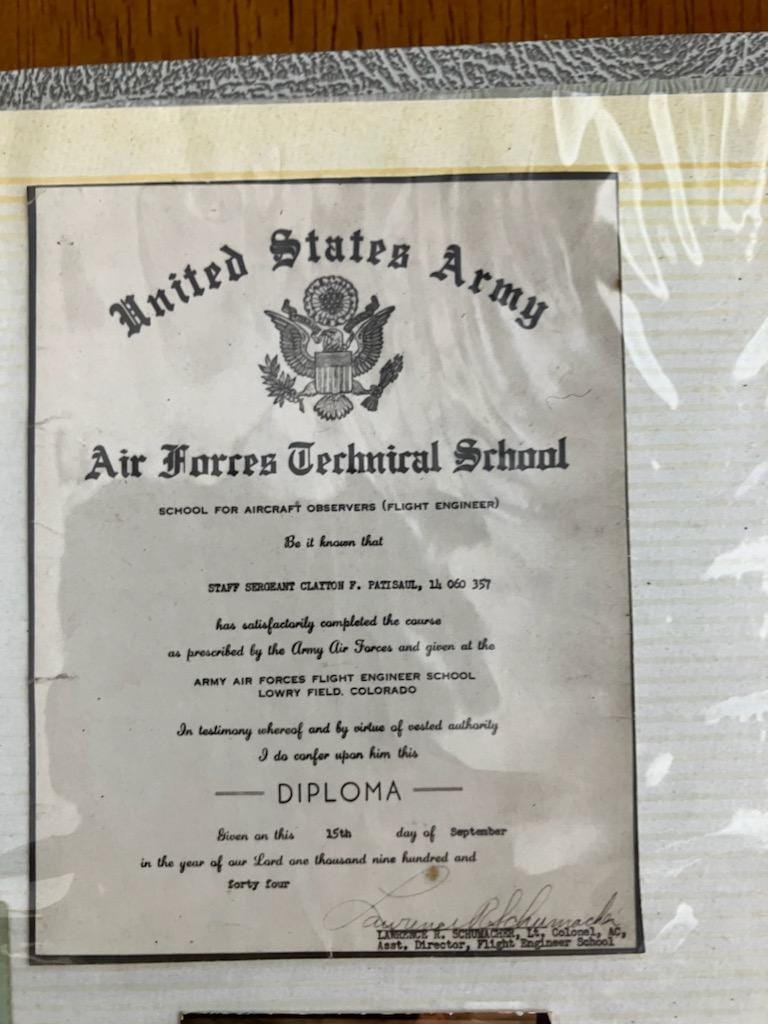

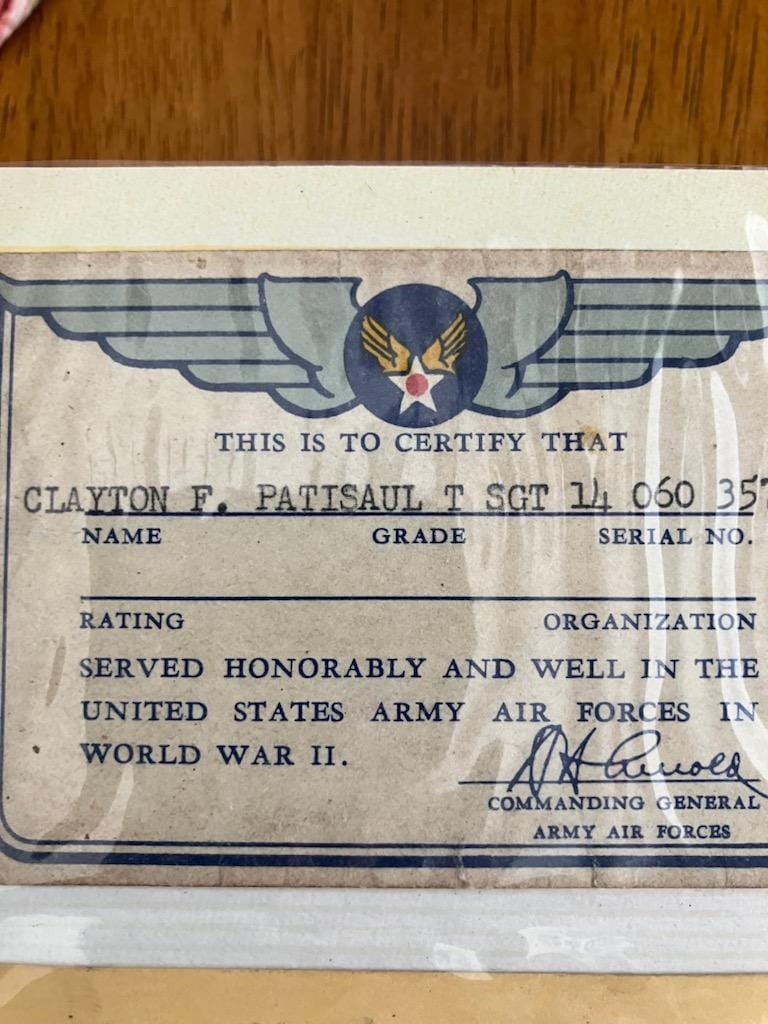

BIRTH 22 Mar 1921 Laurens County, Georgia
DEATH 14 Nov 1996 (aged 75) Too Young
BURIAL National Memorial Cemetery of Arizonan Phoenix, Maricopa County, Arizona,
Mother Clara Bell Cardell
Father Charles "Charlie" Melton Patisaul
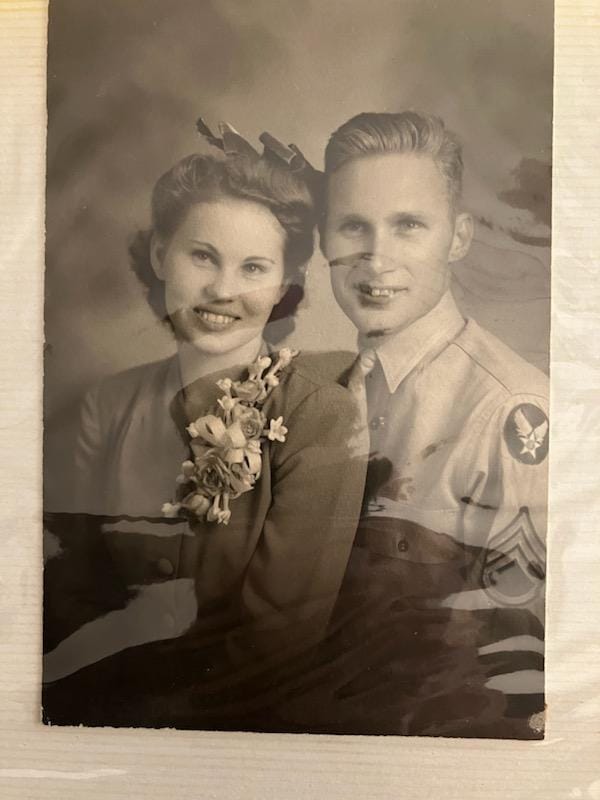
Wife.
Juanita Jean Patisaul Obituary
Along-time resident of Ventura, California, Juanita died peacefully at her home on July 23, 2012.
She moved to Ventura in the late 50s with her husband, Clayton (Pat) Patisaul, and their three children. A dedicated wife and mother, she was actively involved in raising her children, and participating in school and church activities.
In the early 60s, as her children matured, she accepted a management position with Orange Empire Redemption Center in Ventura where she worked for two years.
She is survived by her three children, Patricia Feagles (Peoria, Ariz.), Harrell (Fresno), Linda Ledbetter (Visalia); six grandchildren, and 14 great-grandchildren; brothers, Gerald, Elmer, and Jim Bratcher of Visalia, and Mike Bratcher (Ventura). Sisters Lois Guynn (Bakersfield), Glenda Taft (Atascadero), and her favorite nephew me! (Ronnie Wilson)
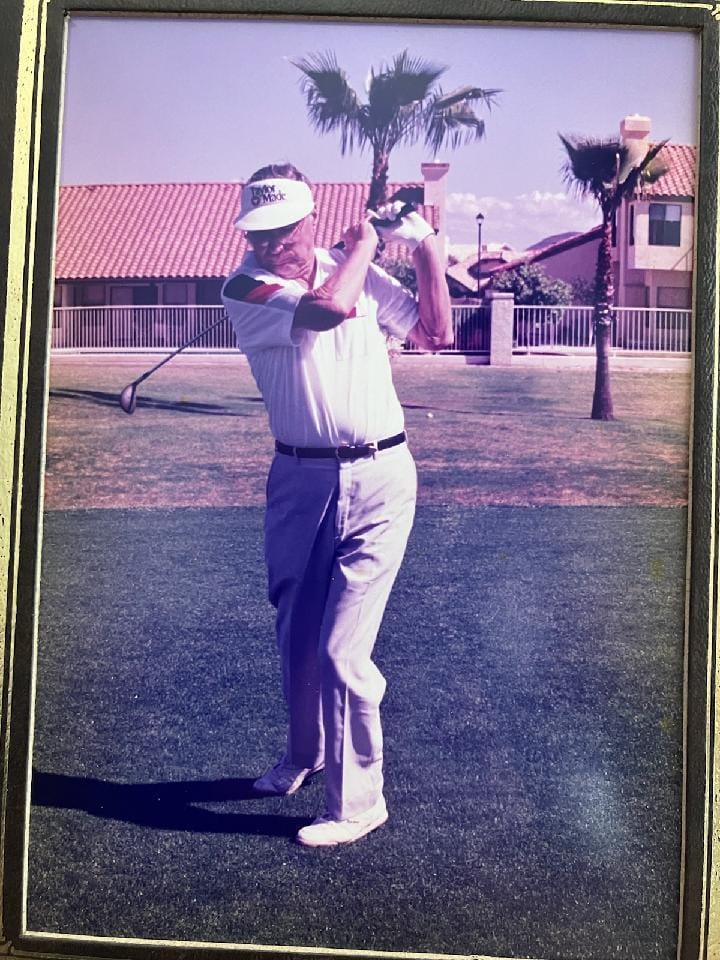
She is predeceased by a brother, Ray, and her parents, Clarence and Thelma Bratcher. Arrangements are being handled by Salser and Dillard Funeral Chapel in Visalia, Calif.
My Uncle Pat Patisaul served in the Pacific Theater during WWII. Training began in Douglas, Arizona, then he finished training in Kern County, California. He married Juanita in Douglas, then moved to Wasco, Ca.
Minter Army Airfield auxiliary fields were a number of airfields used during World War II to support the Minter Army Airfield (now the Shafter Airport) near Shafter, California. Minter Army Airfield was also called Lerdo Field, after the nearby road. Minter Army Airfield also housed the Shafter Gap Filler Annex P-59A and Shafter Army Aviation Test Activity and opened in June 1941. An Army depot opened on the base in October 1941, the Minter Sub-Depot, a division of the Sacramento Air Depot. Minter Army Airfield had 7,000 troops and civilians working at the base.


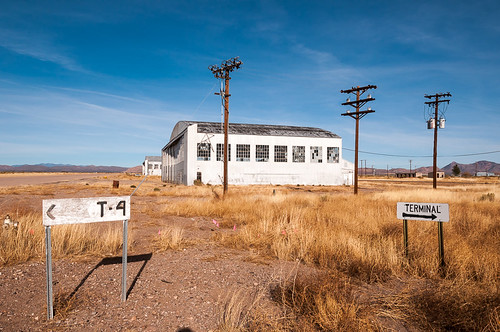
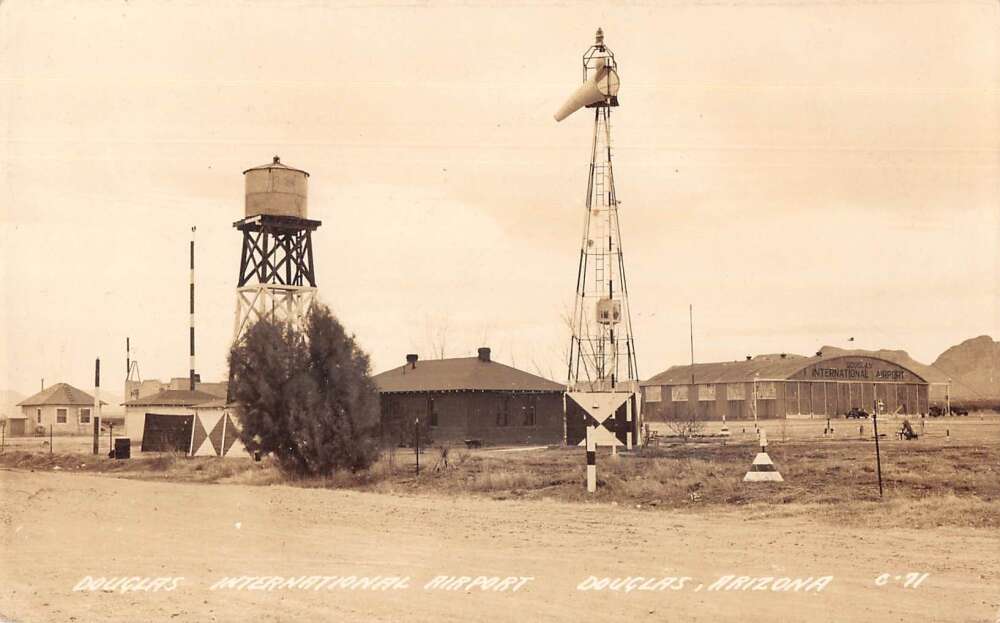
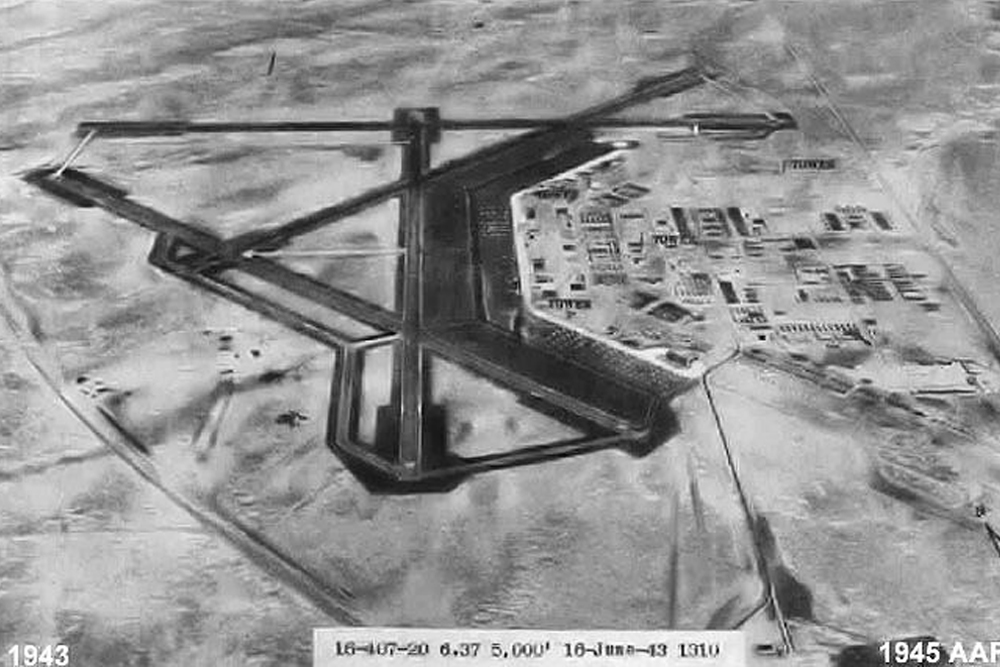
Several missions later, one where he was involved in mine laying operations in the Japan area, returning to Tinian Island, flack damage knocked out the hydraulics, which forced the members of the Marianna Bell to bail-out over Iwo Jima. This happened on August 7, 1945.
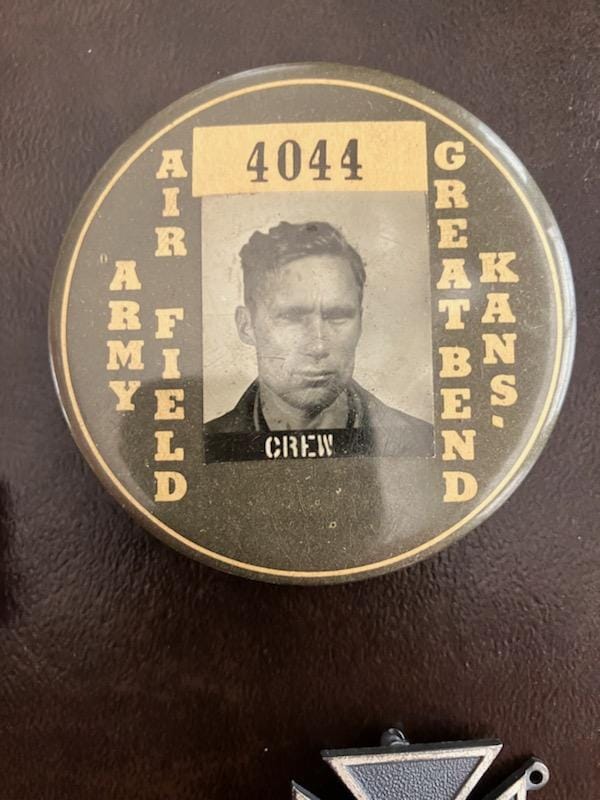
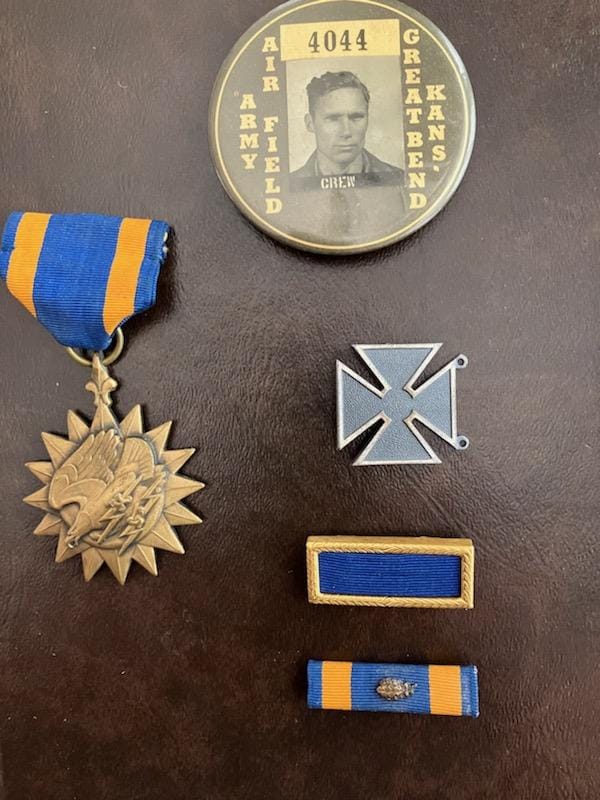
After returning from the war, he had several jobs, then ended up in the Electrical union in Ventura County, California until he retired.
As a young man, Pat hired me to do chores around his house so I could earn some money. He also gave me my first quality set of Irons. (Golf clubs). In high school, I played on the Golf Team. Fortunately, I placed high in the CIF high school competition tournament. I guess his investment paid off!
He moved to Mesquite, Nevada, where he spent his remaining days.

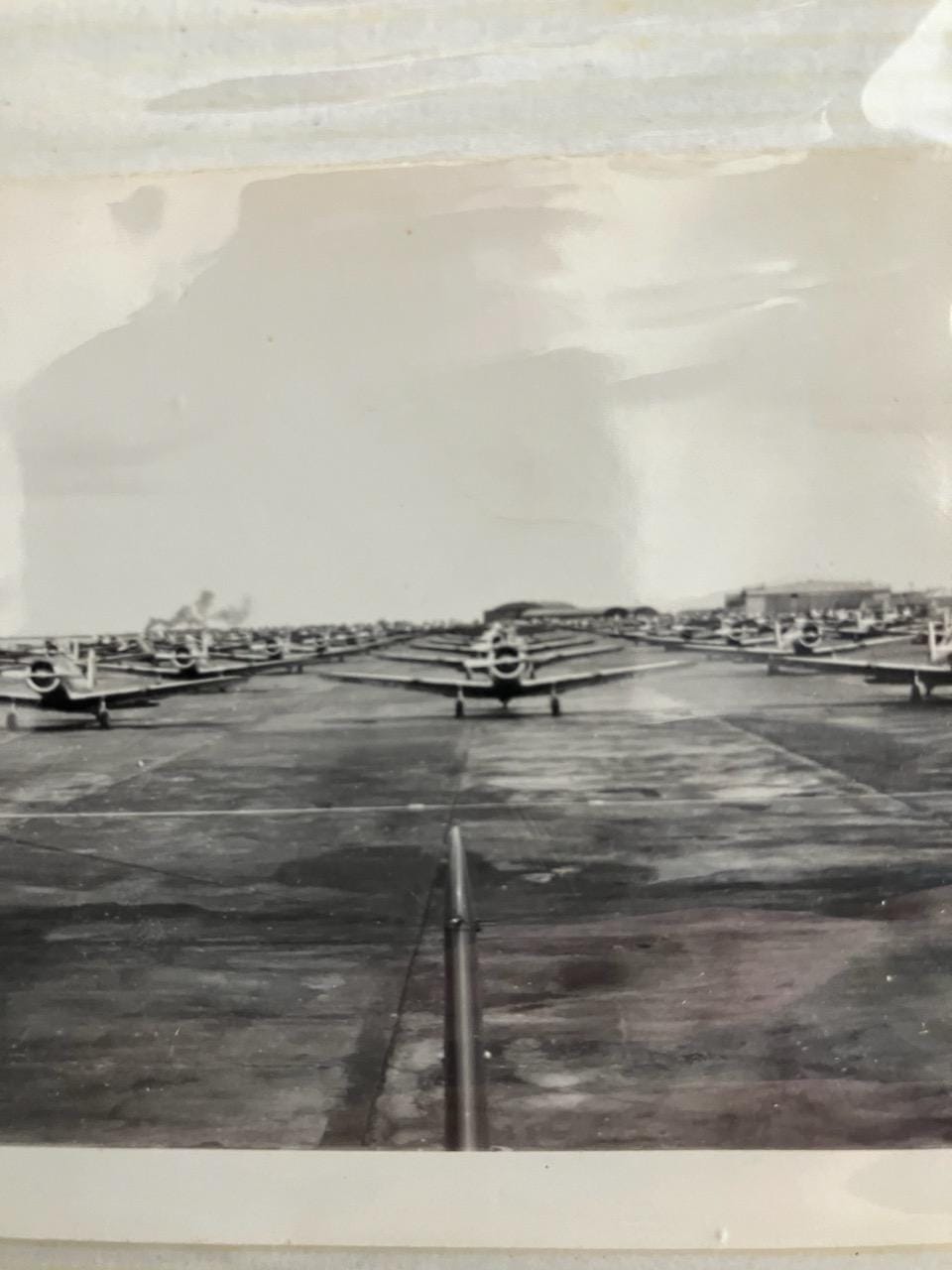
Combat Missions
Pay attention to August 7-8 1945
1 August 1945
JAPAN:
During the night of 1-2 August, 801 of 836 B-29's dispatched carry out 1 mining, 5 incendiary and on HE bombing raids on Japan. One B-29 is lost (see below):
(Mission 305) Thirty-seven 504th BG B-29's drop mines in Shimonoseki Strait, in Nakaumi Lagoon, at Hamada, Sakai, and Yonago Japan and Najin and Seishin Korea; five B-29's mine alternate targets.
(Mission 306) One hundred sixty-nine 58th BW B-29's attack the Hachioji urban area destroying 1.12 square miles or 80% of the city.
(Mission 307) One hundred seventy-three 73rd BW B-29's hit the Toyama urban area, a center of aluminum ball bearing and special steel production, destroying 1.87 square miles or 99.5% of the city; one B-29 hits an alternate target.
(Mission 308) One hundred twenty-five 313th BW B-29's attack the Nagaoka urban area destroying 1.33 square miles or 65.5% of the city; 5 B-29's hit alternate targets.
(Mission 309) One hundred sixty 314th BW B-29's hit the Mito urban area destroying 1.7 square miles or 65% of the city; one B-29 hits a target of opportunity.
(Mission 310) One hundred twenty 315th BW B-29's bomb the Mitsubishi Oil Company at Kawasaki but could only add slightly to the damage previously inflicted; two B-29’s hit targets of opportunity.
|
2 August 1945
MARIANAS:
LT Gen Nathan F. Twining relieves LT Gen Curtis E. LeMay as Commanding General XX AF; LeMay is assigned to USASTAF as Chief of Staff.
3 August 1945 No actions reported.
4 August 1945 (pg 694) No actions reported.
5 August 1945
JAPAN:
During the night of 5-6 August, 612 B-29's fly 1 mining, 1 HE bombing and 4 incendiary raids against Japan. Two B-29’s are lost.
(Mission 311) Twenty-seven 504th BG B-29's mine the waters of the Sakai, Yonago, Nakaumi Lagoon, Miyazu, Maizuru, Tsuruga, Obama Japan and Najin and Geijitsu Korea; one B-29 hits an alternate target.
(Mission 312) Sixty-three 58th BW B-29's attack the Saga urban area destroying .02 square miles or 1.5% of the city. One B-29 is lost.
(Mission 313) Ninety-two 313th BW B-29's hit the Maebashi urban area destroying 1 square mile or 42.5% of the city; 4 B-29's hit alternate targets.
(Mission 314) Two hundred fifty 73rd BW and 314th BW B-29's attack the Nishinomiya-Mikage urban areas destroying 2.8 square miles or 29.6% of the city; three B-29's hit alternate targets. One B-29 is lost.
(Mission 315) One hundred six 315th BW B-29's bomb the Ube Coal Liquefaction Company facility at Ube destroying 100% of the refining units and destroying or damaging 80% of other structures; 2 B-29's hit alternate targets.
(Mission 316) Sixty-four B-29's attack the Imabari urban area destroying .73 square miles or 76% of the city area.
|
RYUKYU ISLANDS:
HQ 333rd BG and 435th, 460th and 507th BS flying B-29’s arrive at Kadena, Okinawa from the US.
6 August 1945
JAPAN:
The 509th CG B-29 takes off from North Field, Tinian at 0245 hours. At two-minute intervals, 2 observation B-29's follow. At 0815 hours local, an atomic bomb is released over Hiroshima from 31,600 ft; it explodes 50 seconds later. (More than 80% of the city's buildings are destroyed and over 71,000 people are killed. The B-29 lands on Tinian at 1458 hours followed within the hour by the 2 observation aircraft.)
|
7 August 1945
JAPAN:
One hundred fifty-four B-29's fly a daylight bombing mission and 30 B-29's fly a mining mission on the night of 7-8 August. One B-29 is lost.
(Mission 317) One hundred twenty-four B-29's escorted by VII FC fighters, bomb the naval arsenal at Toyokawa. One B-29 is lost.
(Mission 318) During the night of 7-8 Aug, 29 504th BG B-29's escorted by FEAF P-47's drop mines in Shimonoseki Strait, at Miyazu, Maizuru, Tsuruga, Obama and at Najin Korea; one B-29 mines an alternate target.
|
8 August 1945
JAPAN:
Three hundred eight-one B-29's fly three missions, 2 during the day of 8 August and 1 during the night of 8-9 August. Seven B-29's are lost. (These are the last B-29 crews lost in combat during the war)
(Mission 319) Shortly before 1200 hours, 221 B-29's drop incendiaries on Yawata destroying 1.22 square miles or 21% of the city; six B-29's bomb alternate targets. One B-29 is shot down by Japanese fighters and 3 are lost to mechanical reasons.
(Mission 320) Late in the afternoon, sixty B-29's dispatched from the 314th BW bomb an aircraft plant and arsenal complex at Tokyo; two B-29's hit alternate targets. Two B-29's are lost to flak and one to mechanical reasons.
(Mission 321) During the night of 8-9 Aug, ninety-one 58th BW B-29's hit Fukuyama urban area with incendiaries destroying .88 square miles or 73.3% of the city; one B-29 hits an alternate target.
|
SOVIET UNION:
The Soviet Union declares war on Japan.
9 August 1945
JAPAN:
A second atomic bomb is dropped on Japan. A B-29 from the 509th CG leaves North Field, Tinian at 0230 hours; The B-29 is followed by 2 observation B-29's. The primary target, Kokura, is obscured by bad weather; the attack is made against the secondary target, Nagasaki. The bomb, dropped from 28,900 feet at 1058 hours (local), explodes one minute after release. Japanese report 24,000 killed. The attacking B-29's refuel on Okinawa, and return to Tinian by 2339 hours.
(Mission 322) During the night of 9-10 August, 95 315th BW B-29's bomb the Nippon Oil Refinery at Amagasaki; two B-29’s bomb alternate targets.
10 August 1945
JAPAN:
Japanese radio announces the Government's desire for peace and USASTAF limits operations to precision missions.
(Mission 323) During the day, 70 314th BW B-29's, escorted by 2 groups of P-51's, bomb the arsenal complex at Tokyo; 3 B-29's hit alternate targets.
(Mission 324) During the night of 10-11 Aug, 31 504th BG B-29's mine Shimonoseki Strait, Nakaumi Lagoon, and waters around Sakai and Yonago Japan and Wonsan Korea.
|
11 August 1945
UNITED STATES:
The Government of the United States accepts the Japanese offer to surrender.
12 August 1945 No actions reported.
13 August 1945
RYUKYU ISLANDS:
The 461st, 462nd, 463rd BS's of the 346th BG, 8th AF, arrive on Okinawa from the US with B-29's.
|
14 August 1945
JAPAN:
Seven hundred fifty-two B-29's fly seven missions against Japan without loss. (These are the last B-29 missions against Japan in WWII. Before the last B-29's return, President Harry S. Truman announces the unconditional surrender of Japan.)
(Mission 325) One hundred fifty-seven B-29's bomb the naval arsenal at Hikari; 4 B-29's hit alternate targets.
(Mission 326) One hundred forty-five B-29's bomb the Osaka Army Arsenal and 2 hit alternate targets.
(Mission 327) One hundred eight B-29's bomb the railroad yards at Marifu; 2 B-29's hit alternate targets.
(Mission 328) In the longest nonstop upstaged B-29 mission from the Marianas (3,650 miles), 132 B-29s bomb the Nippon Oil Company at Tsuchizakiminato.
(Mission 329) Eighty-one B-29's drop incendiaries on the Kumagaya urban area destroying .27 square miles or 45% of the city.
(Mission 330) Eighty-six B-29's drop incendiaries on the Isezaki urban area destroying .17 square miles or 17% of the city.
(Mission 331) Thirty-nine B-29's mine the waters off Nanao, Shomonoseki, Miyazu and Hamada.
15 August 1945
JAPAN:
All offensive actions against Japan ended. General of the Army Douglas MacArthur is notified that he is the Supreme Commander of the Allied powers.
MacArthur tries to communicate with the Japanese government in Tokyo using War Department facilities. When he receives no reply, he turns to the Army Airways Communications System (AACS). The AACS Manila station (call sign WXXU), tapped out MacArthur’s instructions to the Japanese using a frequency over which AACS had been broadcasting uncoded weather information.
Within 2 hours, the Tokyo reply was received. This was the first direct communication between the Allies and the Japanese government.
These next documents were all I could get from the War Department. A little hard to read they give you some insight into the payroll of the Air Force during this period.
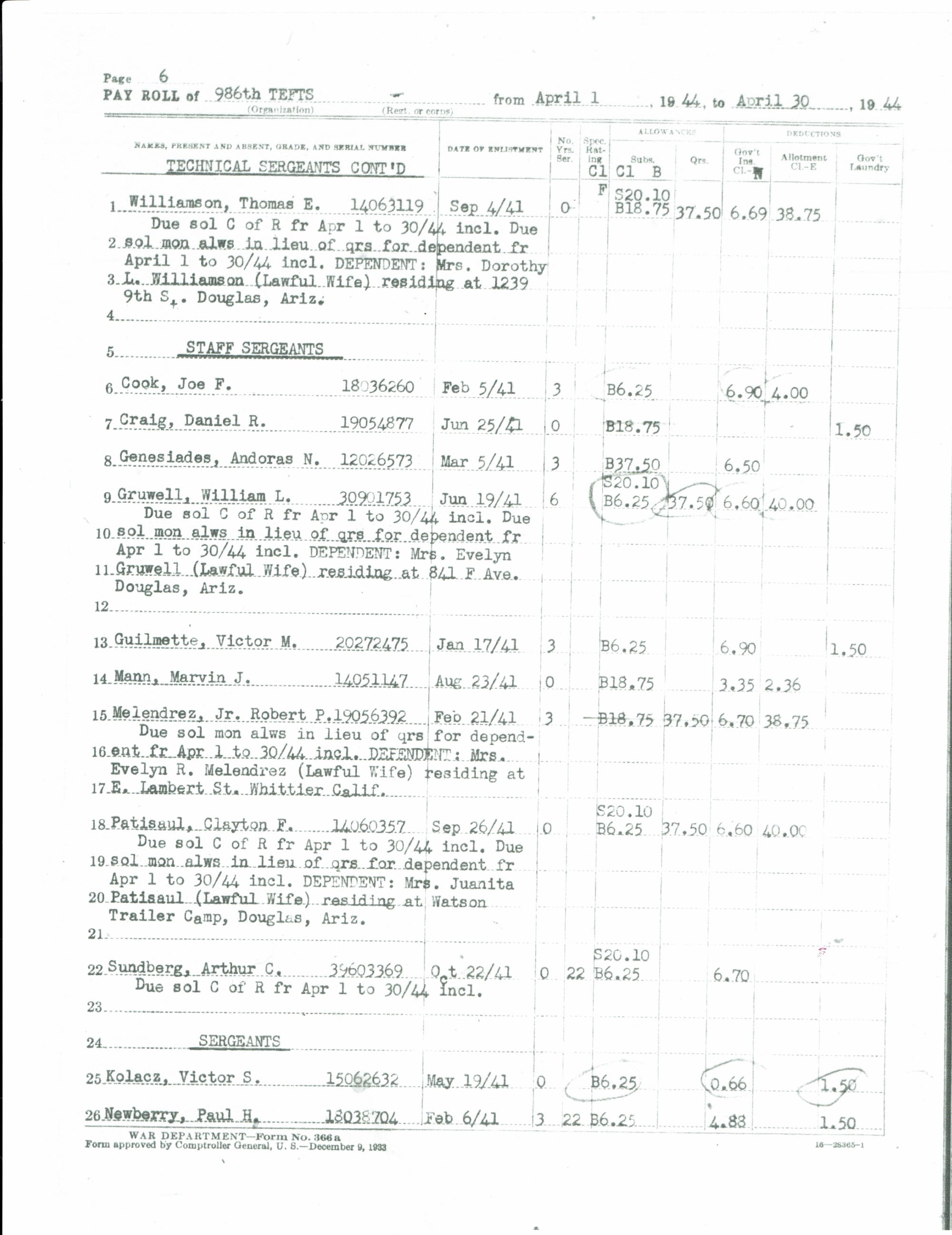
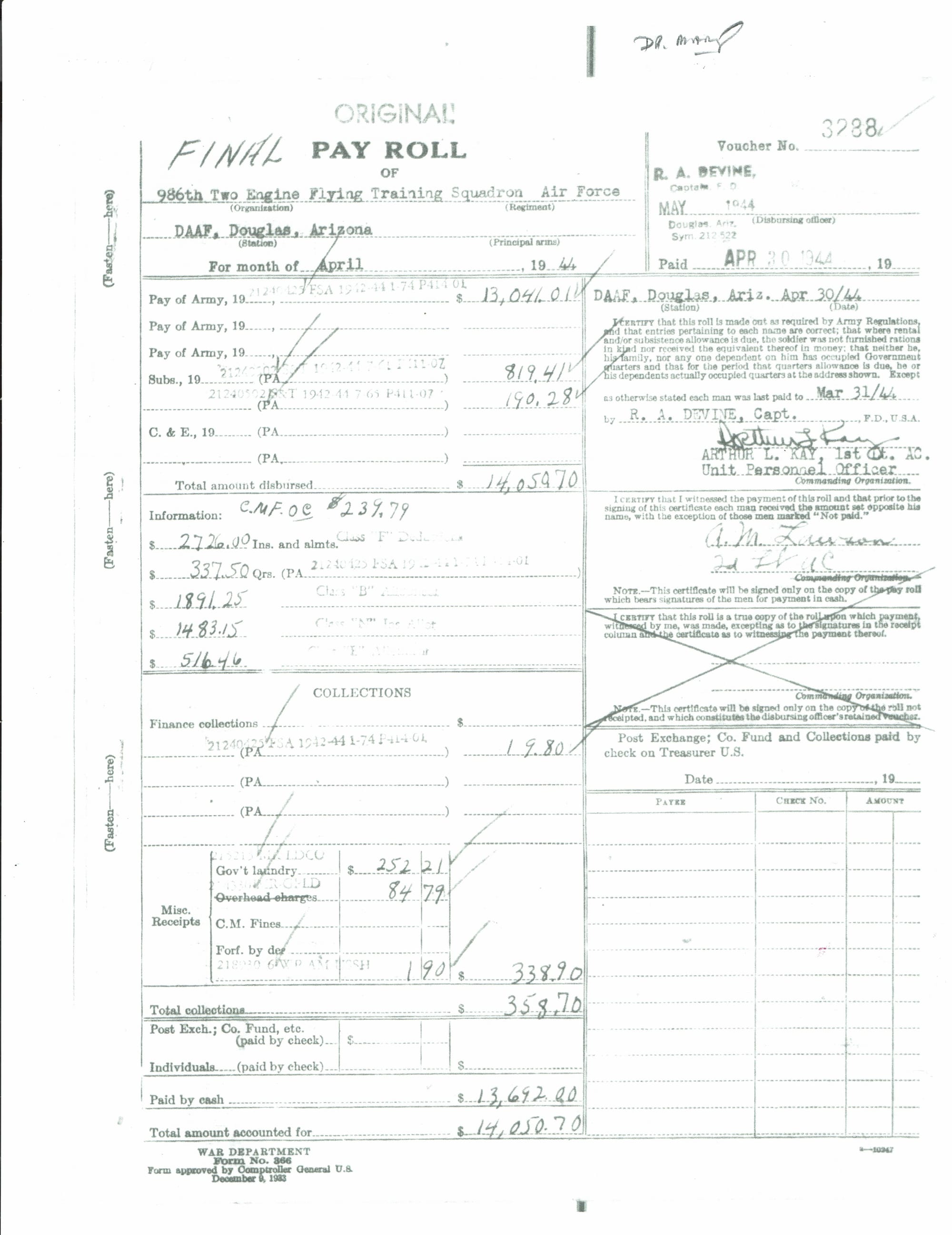
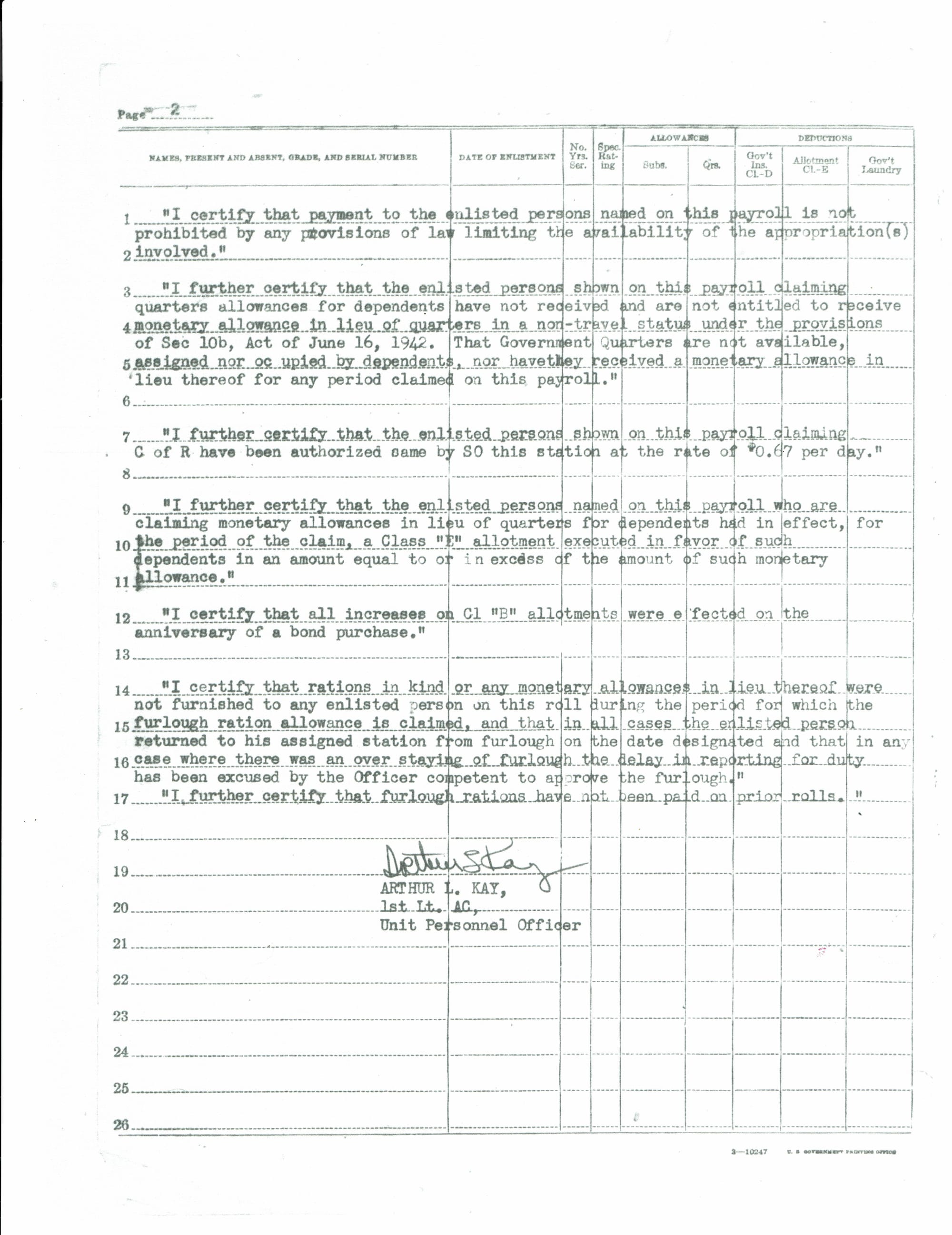
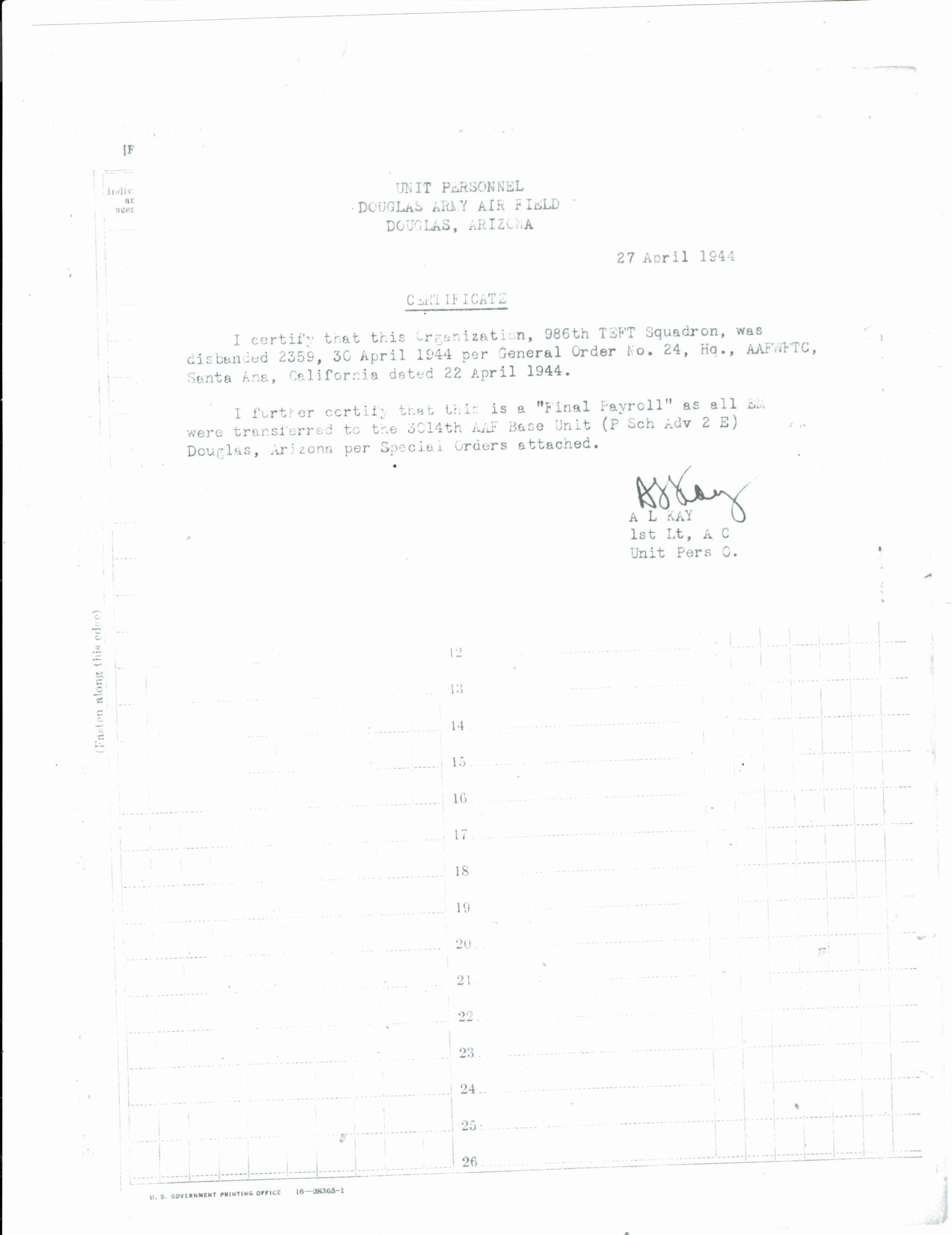
Welcome to the new members of the newsletter. It's always a pleasure to see new people sign up. If you have some information on the battalion, please reach out. No matter how insignificant you may think the information may be, it might lead someone to a new avenue for research.
Contact us at the187thengcobn@aol.com
You can sign up for more information at https://187th-engineering-combat-battalion.ghost.io/ghost/#/site


